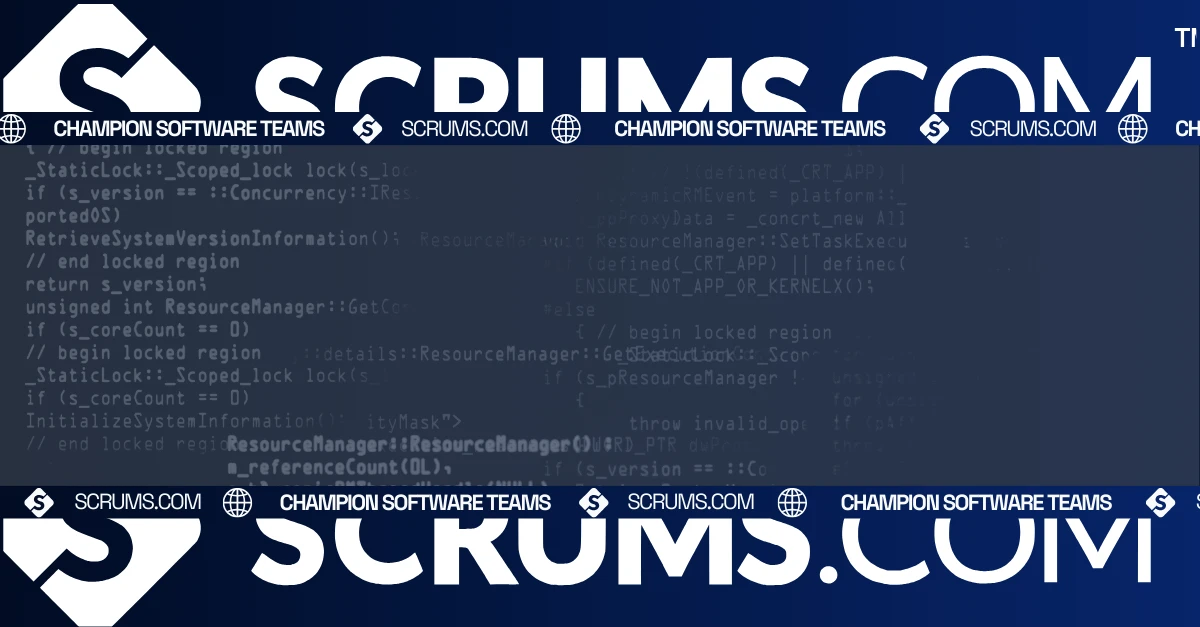Radix UI: Accessible & Modular UI Components
Introduction to Radix UI
Radix UI is an open-source library of accessible, modular, and customizable UI components for building modern web applications. Designed with accessibility in mind, Radix UI provides developers and software development companies with the tools to create high-quality, flexible user interfaces that comply with web standards. For business owners and CTOs, Radix UI represents a strategic asset that ensures a seamless user experience while reducing development time and costs.
What is Radix UI?
Radix UI is a collection of low-level, unstyled components that provide the foundational building blocks for designing user interfaces. Launched by Modulz, Radix UI is built on modern web standards and follows the Web Content Accessibility Guidelines (WCAG), ensuring that all components are fully accessible out of the box.
Radix UI solves the problem of accessibility and scalability in web development by offering a highly customizable and extensible component library. It is particularly effective for teams that need to maintain a consistent design system while ensuring that their web applications are accessible to all users, including those with disabilities. Radix UI is most effective in environments where user-centric design, scalability, and ease of integration with popular frontend frameworks are critical, such as SaaS platforms, e-commerce websites, and enterprise applications.
Core Features and Functionalities
Accessibility by Default: Radix UI components are designed to comply with WCAG standards, ensuring that all user interfaces built with Radix are accessible to users with disabilities.
Modular and Unstyled Components: Offers a library of low-level components that are unstyled by default, allowing developers to fully customize their design while maintaining consistency and flexibility.
Headless Architecture: Provides headless components that separate logic from presentation, making it easier to integrate Radix UI with various styling frameworks like Tailwind CSS, Styled Components, or Emotion.
Composability and Extensibility: Radix UI components are composable and extensible, enabling developers to build complex UIs by combining multiple simple components.
Support for Popular Frameworks: Integrates seamlessly with popular frontend frameworks like React, Next.js, and Vue.js, providing flexibility and ease of use.
Theming Capabilities: Supports theming and customization, allowing teams to easily adapt components to match their brand identity.
Robust Documentation and Community Support: Offers comprehensive documentation, guides, and a supportive community to help developers quickly learn and implement Radix UI.
Benefits for Businesses and Development Teams
For Businesses:
- Cost Reduction: Radix UI reduces the time and resources needed to build accessible and scalable user interfaces, leading to cost savings in development and maintenance.
- Enhanced User Experience: Ensures that all UI components are accessible and compliant with web standards, providing a better user experience for all customers, including those with disabilities.
- Faster Time to Market: By leveraging pre-built components and headless architecture, businesses can accelerate development cycles and launch products faster.
- Improved Brand Consistency: Theming capabilities allow businesses to maintain a consistent brand identity across different web applications and platforms.
For Developers:
- Ease of Use and Flexibility: Radix UI’s modular and unstyled components provide developers with the flexibility to build custom UIs without being restricted by predefined styles.
- Supports Agile Workflows: Integrates well with modern frontend frameworks and DevOps tools, supporting agile development practices and continuous integration.
- Accessibility Compliance: Built with accessibility in mind, ensuring that developers can easily create applications that are WCAG-compliant.
- Enhanced Collaboration: The headless architecture and robust documentation make it easier for teams to collaborate and share components across projects, enhancing productivity.
Use Cases and Applications
Radix UI is used across various industries and development environments:
Custom Web Application Development: Provides a flexible and accessible component library for building custom user interfaces in web applications.
Ecommerce Platforms: Enhances user experience by ensuring accessible, scalable, and customizable UIs for ecommerce platforms.
SaaS Platforms: Enables SaaS providers to quickly build and iterate on their user interfaces while maintaining a consistent design system.
Industry-Specific Examples:
- Fintech: Builds secure and accessible interfaces for financial applications, ensuring compliance with accessibility standards.
- Healthcare: Develops user-friendly and accessible patient portals and healthcare management systems.
- Education: Creates interactive and accessible learning platforms that cater to users with different needs and abilities.
Integration Capabilities and Ecosystem
Radix UI provides robust integration capabilities with various tools and platforms:
- Compatibility with Popular Frameworks: Radix UI works seamlessly with React, Next.js, and Vue.js, enabling easy integration into modern web applications.
- Integration with Styling Libraries: The headless architecture allows Radix UI to be styled using popular CSS-in-JS libraries like Styled Components, Emotion, or utility-based libraries like Tailwind CSS.
- API and Extensibility: Radix UI provides an API for customizing and extending components, allowing teams to adapt the library to their specific use cases.
- Plugins and Extensions: Supports third-party plugins and extensions to expand functionality and integrate with other development tools and platforms.
Comparison with Alternatives
Radix UI competes with other UI component libraries like Material-UI, Chakra UI, and Ant Design.
- Pros: Accessibility by default, modular and unstyled components, headless architecture, and robust documentation.
- Cons: Requires additional styling effort since components are unstyled by default, which may not be ideal for teams looking for out-of-the-box design.
- Cost Considerations: Radix UI is open-source and free to use, making it a cost-effective choice for development teams of all sizes.
- When to Choose Radix UI: Opt for Radix UI if you need a highly customizable, accessible, and scalable UI component library that integrates well with modern frontend frameworks.
Getting Started with Radix UI
Here’s a step-by-step guide for business decision-makers and developers:
- Install Radix UI: Use npm or yarn to install Radix UI components in your project. Visit the Radix UI documentation for specific installation instructions.
- Integrate with Frontend Frameworks: Integrate Radix UI with your chosen frontend framework, such as React or Next.js, to start using the components.
- Explore Component Library: Familiarize yourself with the component library, including buttons, modals, and dropdown menus, to understand their customization options and accessibility features.
- Style Components with CSS Libraries: Use styling libraries like Tailwind CSS, Styled Components, or Emotion to apply custom styles to Radix UI components.
- Leverage Theming Capabilities: Customize themes to align with your brand identity, ensuring a consistent design across all applications.
- Automate Testing and Deployment: Integrate Radix UI with CI/CD tools like GitHub Actions, Jenkins, or CircleCI to automate testing and deployment for continuous delivery.
Refer to Radix UI Documentation for tutorials, guides, and community support.
Related Tools and Resources
- Radix UI vs. Material-UI: Compare the features, benefits, and use cases of Radix UI and Material-UI for building accessible web applications.
- Best Practices for UI Development with Radix UI: Discover strategies and tools for optimizing UI development using Radix UI.
- Radix UI Documentation: Radix UI Documentation for comprehensive guides and tutorials.
Explore Related Software Development Tools
FAQs
We've got you covered, these are some common questions we receive. Not seeing the answer to something?...
Yes, Radix UI is an open-source library, making it free to use for all types of projects.
Radix UI simplifies UI development, ensures accessibility compliance, and reduces time to market, making it ideal for modern software development.
Yes, Radix UI integrates seamlessly with frameworks like React, Next.js, and Vue.js, among others.
Yes, Radix UI provides robust theming capabilities, allowing teams to customize components to match their brand identity.
Absolutely. Radix UI's modular, accessible, and headless components are ideal for building scalable and maintainable enterprise applications.
Radix UI provides extensive documentation, tutorials, community forums, and GitHub support for developers.
Explore Software Development Blogs
The most recent trends and insights to expand your software development knowledge.




